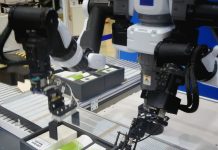In the rapidly advancing world of finance and investing, the introduction of trading bots has undoubtedly redefined the industry’s landscape.
These sophisticated pieces of software, designed to make transactions on an investor’s behalf, embody the perfect marriage between technology and financial acumen.
They enable investors to stay ahead of the curve by using data to predict and act upon market trends with lightning-fast precision. But how does a trading bot decide when to buy?
Let’s embark on a journey to unravel the intricate mechanisms underpinning crypto automated trading.
Trading Bots: The Vanguard of Modern Investing
A trading bot is a product of years of technological innovation and financial analysis. It is essentially a software program programmed to make buying and selling decisions in financial markets based on predefined parameters.
By using complex algorithms, these bots are capable of processing vast amounts of market data in real-time, providing an unprecedented advantage in terms of speed and efficiency.
Trading bots have become indispensable tools for institutional and retail investors alike, offering an avenue to maximize profits while mitigating the risk of human error.
They are particularly handy in today’s dynamic markets, where the ability to swiftly react to market changes can make a significant difference in an investment portfolio’s performance.
Unpacking the Bot’s Brain: Trading Algorithms and Strategies
Central to a trading bot’s decision-making process are the trading strategies and algorithms that act as its brain. Algorithms are essentially a set of mathematical instructions or models that bots follow to determine when to buy or sell an asset.
These can be customized based on a variety of trading strategies, such as momentum trading, mean reversion, and statistical arbitrage, each with its own unique risk profile and potential for returns.
Before deployment, these strategies are backtested using historical market data. This process helps ascertain the effectiveness of the strategy in different market conditions, highlight potential areas of improvement, and ultimately fine-tune the algorithm for optimal real-world performance.
Market Data: The Fuel that Drives Trading Bots
Market data, encompassing real-time and historical information, serves as the lifeblood for trading bots.
By analyzing this data—which may include changes in price and volume, as well as impactful news events—bots can anticipate future price movements and make buying decisions accordingly.
For instance, a trading bot might be programmed to buy a particular stock when its price falls below a specified threshold, based on patterns identified in historical data.
This approach allows for a data-driven, systematic method of buying and selling that is free from the emotional biases to which human traders may succumb.
Machine Learning: The Bot’s Future-Sensing Mechanism
Modern trading bots frequently employ machine learning (ML)—a subset of artificial intelligence (AI) that enables software to learn from data and enhance its performance over time.
By identifying patterns in massive datasets, ML allows a trading bot to adapt to changing market conditions and make increasingly accurate predictions about future market behavior.
In essence, machine learning gives trading bots a form of ‘intuition’ that can suggest, based on historical data, when it might be advantageous to buy a particular asset. This enhances the bot’s effectiveness and improves its potential for delivering positive returns on investments.
Risk Management: The Safety Harness of Trading Bots
Given the financial markets’ inherent unpredictability, risk management strategies are woven into the fabric of a trading bot’s operations. They are equipped with mechanisms to place stop-loss orders—an order to sell an asset when it reaches a certain price—thus limiting potential losses.
Furthermore, they can calculate the risk/reward ratio—a comparison of the potential risk taken versus the potential return—before deciding on a trade. This ensures that all trading decisions are made with a careful evaluation of their associated risks.
Weighing the Scales: Pros and Cons of Trading Bots
As with any technology, trading bots come with their own set of advantages and drawbacks. On the one hand, they offer the ability to trade 24/7, eliminate emotional trading, and execute trades with unrivaled speed and precision.
They can also process and interpret vast amounts of data, allowing for the implementation of sophisticated strategies that might be too complex or time-consuming for human traders.
On the other hand, trading bots are not exempt from challenges. They can fall prey to technical glitches, sudden market changes, and unpredictable events, all of which can potentially result in financial losses.
Despite their advanced capabilities, they are not a replacement for a robust, diversified investment strategy and require regular human oversight and adjustments based on current market conditions.
Conclusion
Trading bots represent an extraordinary fusion of intricate algorithms, technical indicators, data analysis, machine learning, and risk management strategies. The process through which they decide when to buy is an intricate interplay of these factors, finely tuned to navigate the dynamic landscape of financial markets.
While they offer many advantages, trading bots are not a magic bullet for guaranteed profits. Instead, they should be used as a tool within a wider investment strategy, complementing and enhancing human decision-making rather than replacing it.
As technology continues to advance, the role of trading bots is set to become even more prominent.
Future enhancements may see more advanced AI, improved machine learning capabilities, and increasingly robust risk management strategies, further refining the decision-making processes of trading bots.
As we ride the digital wave of financial trading, these trends paint a promising picture for the future of investment strategies and financial management.







